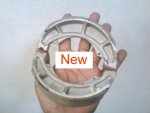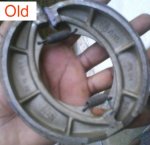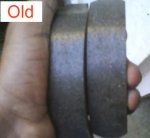and tell us what constitutes "emergency braking" on a track??....
this is about riding the roads every day and braking under emergency conditions.....
Good luck with that front only trick.....the minute you try to turn your front wheel to miss the car you'll be down....bang!
Braking as hard as possible. The same thing that it means on the street.
If this is about riding on the street why did you use an example of steep offroad descents on a dirtbike?
Since you're replying to me I will assume we're staying on point with sport bikes, standards and sport tourers. Are you actually suggesting a mix of front and rear brake in an emergency? Are you suggesting that the rider brake significantly less than they could just in case they need to maneuver?
The time that they buy themselves by fully loading the front end under braking instead of a front/rear mix would allow them to ease off the brake to transfer some weight to the rear so they can turn.
Again.. physics. Your argument is flawed.




















